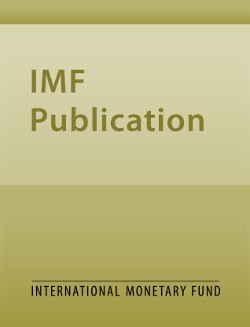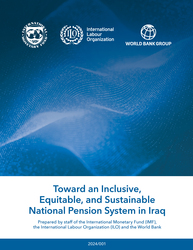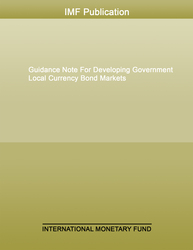
Enhancing Sustainable and Inclusive Growth in the Central African Economic and Monetary Community: Suggested Policies and Structural Reforms
This position note highlights a set of priority reforms at the national and regional levels that can guide the second generation of IMF programs and support the objective of putting the Central African Economic and Monetary Community on a more sustained and inclusive path.
READ MORE...
Volume/Issue:
Volume 2022
Issue 002
Publication date:
ISBN:
Add to Cart by clicking price of the language and format you'd like to purchase
Available Languages and Formats
Topics covered in this book
This title contains information about the following subjects.
Click on a subject if you would like to see other titles with the same subjects.
Economics- Macroeconomics , Economics / General , Central African Economic and Monetary Community , CEMAC , agriculture , sustainable development , financial sector development , social protection , reforms , inclusive growth
Summary
The Central African Economic and Monetary Community (CEMAC) has been hit hard by two shocks, just a few years apart. The first shock in 2015–16 was triggered by a sharp decline in oil prices—CEMAC’s main export proceeds and revenue source—just when many of these countries were ramping up public investment programs. CEMAC countries responded by putting together a coordinated effort relying on large fiscal adjustments under IMF- and World Bank Group-supported programs. External balances were on the path of recovery when, in the first quarter of 2020, the world experienced its largest economic shock since World War II with the spread of the COVID-19 pandemic and, again, a collapse in oil prices. A large demand and supply shock ensued, exacerbated by the social and economic cost of mitigation measures to contain the contagion. This second crisis hit the region before fiscal and external buffers had time to fully recover from the previous one and threatened to erase the hard-won gains made since the previous shock.
CEMAC authorities had been trying to set in motion a process to address the root cause of the region’s vulnerability—a largely undiversified economic basis overly dependent on oil. The CEMAC Commission had put in place a large-scale strategy of CEMAC Economic and Financial Reform (PREF). This plan defines a set of reforms, organized around five pillars, to create the basis for more diversified, inclusive, private sector–led growth and enhanced governance of the public sector. Initial measures focused on engaging in closer financial relationships with the IMF and other development partners. As the first generation of IMF-supported programs are ending, and most CEMAC countries have benefited from the IMF’s sizable emergency financing to cope with the social and economic fallout of the COVID-19 crisis, the next step is to identify key reforms that will underpin second-generation programs to boost progress on the PREF and focus on addressing growth bottlenecks.
This position note responds to this need. It highlights a set of priority reforms at the national and regional levels that can guide the second generation of IMF programs and support the objective of putting CEMAC on a more sustained and inclusive path.
Copyright © 2010 - 2025
Powered by:
AIDC

